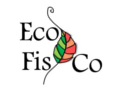Antioxidant and photoprotective responses to elevated CO2 and heat stress during holm-oak regeneration by resprouting evaluated by NIRS (Near Infrared Reflectance Spectroscopy)
- Authors:
- Pintó-Marijuan M, Joffre R, Casals I, de Agazio M, Zacchini M, García-Plazaola JI, Esteban R, Aranda X, Guárdia M, Fleck I
- Year:
- 2013
- Journal:
- Plant Biology
- Volume:
- 15
- Initial page - Ending page:
- 5 - 17
- Description:
-
Abstract
Photosynthetic, photoprotective and antioxidant responses during high temperature stress were determined in leaves of evergreen holm oak (Quercus ilex L.), the main species in Mediterranean forests, during resprouting under elevated CO2 (750 μl·l−1). Leaf chemicals, chloroplast pigments and non-enzymatic antioxidants were quantified in a single measurement using NIRS (near-infrared spectroscopy), a rapid and suitable method for ecophysiological purposes. Resprouts from plants grown under elevated CO2 (RE) showed photosynthetic down-regulation, higher starch content and lower stomatal conductance, but similar stomatal density, than plants grown under current CO2 concentrations (350 μl·l−1) (RA). The photosynthetic sink reduction and need for more antioxidants and photoprotection in RE were reflected in an increased concentration of ascorbate (Asc) and phenolic compounds and in the contribution of the xanthophyll (Z/VAZ) and lutein epoxide cycles to excess energy dissipation as heat, and also reflected in chlorophyll fluorescence measurements. CO2 assimilation parameters were stable from 25 to 35 °C in RE and RA, declining thereafter in RA in spite of a 2.3 °C lower leaf temperature. RE showed a more marked decline in photorespiration above 35 °C and less sensitive stomatal responses to high temperature stress than RA. During heat stress, RE had higher Asc, Z/VAZ and phenolics content, together with delayed enhancement of chloroplast lipophilic antioxidant compounds (carotenes and tocopherols). The high contribution of photoprotective systems and high temperature tolerance in resprouts developed under elevated CO2 would mitigate the effect of photosynthesis acclimation during the regeneration of Q. ilex plants under climate change.



